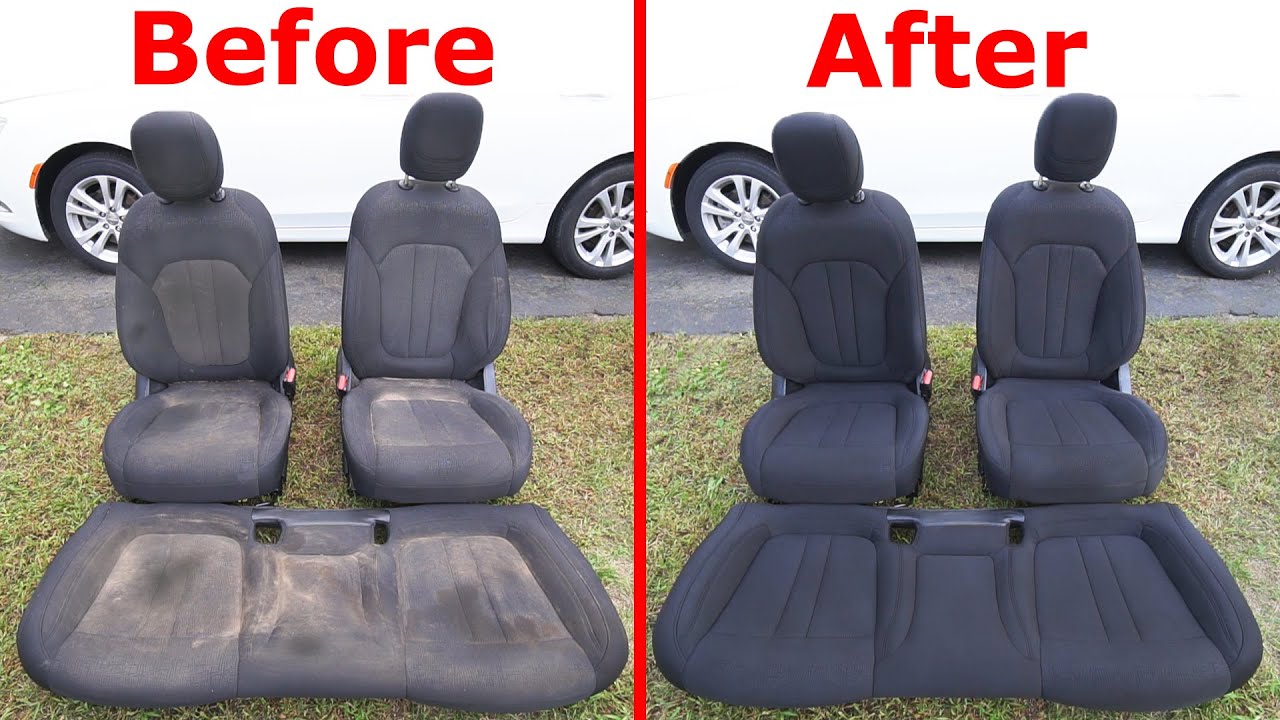What To Clean Seats In Car With

So, you're looking to tackle cleaning your car seats. Excellent! A clean interior is crucial for both aesthetics and hygiene. But before you grab just any cleaner, let's discuss the right approach. Different materials require different methods, and using the wrong product can actually damage your seats. This guide will provide you with the knowledge to choose the right cleaning solutions and techniques, ensuring your car's interior looks its best without causing harm. Think of this as preventative maintenance for your upholstery!
Understanding Upholstery Materials: Key to Choosing the Right Cleaner
The first step is identifying the type of material your seats are made from. The most common types are:
- Fabric: Typically made from synthetic fibers like polyester or nylon. These are generally durable and easier to clean.
- Leather: Requires special care to prevent drying and cracking. There are different types of leather, including aniline, semi-aniline, and protected (or coated) leather, each with specific cleaning needs.
- Vinyl: A synthetic material often used as a leather substitute. It's relatively easy to clean but can be prone to cracking and fading in extreme temperatures.
- Alcantara (Synthetic Suede): A luxurious, soft material that requires gentle cleaning methods.
Once you've identified the material, you can select the appropriate cleaning products.
Fabric Seats: A Versatile Approach
For fabric seats, you have several options:
- Upholstery Cleaner: These are specifically formulated for automotive interiors and are generally safe for most fabric types. Look for cleaners that are pH-balanced to avoid damaging the fabric's fibers.
- Steam Cleaner: Steam cleaners can effectively remove embedded dirt and grime. However, use caution and avoid over-saturating the fabric, as this can lead to mold and mildew growth. Always test in an inconspicuous area first.
Leather Seats: The Delicate Touch
Leather requires a more specialized approach:
- Leather Cleaner: Use a dedicated leather cleaner designed for automotive interiors. These cleaners are formulated to gently remove dirt and grime without stripping the leather's natural oils.
- Leather Conditioner: After cleaning, apply a leather conditioner to moisturize the leather and prevent it from drying and cracking.
- Avoid Abrasive Cleaners: Avoid using abrasive cleaners or scrub brushes, as these can scratch the vinyl's surface.
Alcantara Seats: Gentle Cleaning is Key
Alcantara requires a gentle approach:
- Alcantara Cleaner: Use a dedicated Alcantara cleaner or a mild upholstery cleaner that is safe for delicate fabrics.
- Microfiber Cloths: Use soft microfiber cloths to gently blot stains.
- Vacuum Regularly: Vacuum Alcantara seats regularly to remove loose dirt and debris.
Safety Considerations
When cleaning your car seats, keep these safety tips in mind:
- Ventilation: Work in a well-ventilated area to avoid inhaling fumes from cleaning products.
- Gloves: Wear gloves to protect your hands from harsh chemicals.
- Eye Protection: Wear eye protection to prevent cleaners from splashing into your eyes.
- Follow Instructions: Always follow the manufacturer's instructions for using cleaning products.
- Avoid Mixing Cleaners: Never mix different cleaning products, as this can create dangerous fumes.
Final Thoughts
Cleaning your car seats is a relatively straightforward process that can significantly improve the appearance and hygiene of your vehicle's interior. By understanding the different types of materials and using the appropriate cleaning solutions and techniques, you can keep your seats looking their best for years to come. Remember to always test cleaners in an inconspicuous area first, and don't be afraid to seek professional help if you're dealing with stubborn stains or delicate materials.
We have a downloadable checklist summarizing these points for you to easily keep at hand when cleaning your seats.
